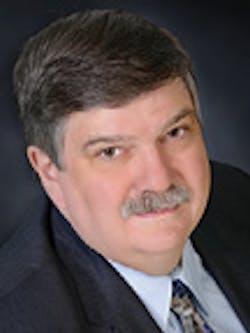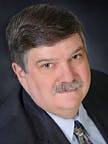Malpractice issues surrounding medical emergency preparedness in dentistry
Larry J. Sangrik, DDS
When I lecture on medical emergency preparedness, I am often asked, “What do I need to do to protect my office from a malpractice suit?” The answer lies in understanding three concepts: (1) the nature of medical emergencies during dental care, (2) what constitutes malpractice, and (3) the expectations of the public.
Understanding medical emergencies
A medical emergency during dental care can be defined as “any time the dentist’s attention is diverted from the dental procedure (or the associated anesthesia procedure) to attend to the patient’s physiological or psychological needs.”1
Using this broad definition means medical events are far more frequent than the once-in-a-career “lights-and-sirens” event some doctors associate with emergencies. In fact, medical emergencies, albeit minor ones, are not uncommon. It is incumbent on all dental offices to prepare for a wide range of scenarios.
Medical emergencies in dental offices occur for one of three reasons.
- Sometimes dentists are at fault—it’s true. Statistically, errors by dentists are the least likely cause of medical emergencies during dental treatment. However, these emergencies are the most lethal and consequently attract the greatest media response.
- The event may be random. Imagine the Rose Bowl in Pasadena filled to capacity. This represents the number of people undergoing dental treatment on a typical weekday. Now envision the Rose Bowl, not filled for a three-hour football game, but rather, continually refilled every day, week after week. It is inevitable that a medical event will occur . . . perhaps a heart attack, perhaps a stroke, perhaps hypoglycemia. Although dental patients are spread across the nation rather than collected in a single venue, the principle remains—in any large group of people, random medical events occur.
- The event may be a reasonable risk of treatment. When a patient faints during an injection, neither the dentist nor the patient is responsible. Syncope is merely an unavoidable complication of injections that everyone must accept.
Unfortunately, merely not being the cause of the emergency is not absolute protection. An old legal maxim says, “In America, anyone can sue anybody over anything.” In determining whether to seek legal counsel, a patient (or the patient’s survivor) is more likely to be guided by three questions: (1) “How serious was the event?” (2) “How rare is the event?” and (3) “How costly was the event?” From the patient’s perspective, medical emergencies that are severe, rare, or costly are probably worthy of a lawsuit regardless of whether or not the dentist is at fault. In short, if something bad happens, expect litigation.
Understanding malpractice
To be awarded a settlement, an attorney must demonstrate four key concepts. It must be proved that the dentist had an obligation (called “duty”) to the patient and that he or she failed to perform that duty (called “breach”). Next, the dentist must have done (or not done) something (called “cause”) which had an adverse effect on the patient (called “damage”). If the defense attorney can refute any one of these four concepts, the verdict is in favor of the dentist.
The first issue surrounds duty. Since a doctor-patient relationship exists, the dentist clearly has some level of duty to the patient during a medical emergency. The challenge is defining that duty. Since no clear standards exist in dentistry regarding medical emergency preparedness, courts rely on a legal concept called “the reasonable man standard.” The concept attempts to determine how a typical person should respond in a comparable situation. Bear in mind, how a person should behave is not necessarily the way most people actually do behave. It is not a defense for a dentist to argue that most “other dentists” would have behaved in a similar manner. Instead, the juror (read: a typical dental patient) will focus on how the dentist should have behaved.
In 2013, I was asked by the Raven Maria Blanco Foundation (RMBF), a patient advocacy group, to develop a survey to study patient attitudes regarding medical emergency preparedness. Over 500 dental patients from across the nation were surveyed. The yet-to-be-published survey overwhelmingly supported that patients view dentistry as a component of sophisticated health care, and therefore dentists should be capable of acting as first responders in a medical emergency to a level commensurate with their education and training.
Looking back at the three types of medical emergencies, dentists might be led to assume they can escape litigation through “cause.” After all, most medical emergencies during dental care are not the result of a dentist’s error. What is overlooked is the legal concept of “mitigating damage.” In any circumstance, it is a legal principle that if something adverse occurs to someone, a second party should not make the situation worse.
Therefore, while a dentist might not directly cause a particular medical event, the dentist can be held responsible for the additional damage that occurred because the dentist breached his or her duty to serve as a first responder. For example, imagine that a patient dies as a result of a stroke that occurred in a dental office. If the dentist responded appropriately as a first responder, it would be difficult to find the dentist negligent. The dentist did not cause the stroke.
However, imagine that the dentist fails to administer oxygen while waiting for emergency responders. Now the attorney for the plaintiff’s estate no longer has to demonstrate the dentist caused the stroke. Instead, the attorney has the easier task of demonstrating that the patient might have survived with early oxygen therapy. The patient’s death was additional damage that the dentist should have mitigated.
Sadly, while most dental offices have oxygen for nonbreathing patients, many dental offices lack supplemental oxygen for breathing patients.
Patient expectations
The RMBF survey was clear about what patients expect. In addition to believing that dental offices should be capable of responding to a medical crisis, four other conclusions emerged.
a. Dentist training: CPR is merely the first step. Dentists need periodic training on a wide range of potential medical problems.
b. Staff training: Proper utilization of staff is crucial to optimizing the dentist’s response to the crisis. This, too, requires periodic training.
c. Mock drills: Holding periodic mock drills allows everyone to practice their duties and responsibilities.
d. Written protocol: Despite formal training and ongoing practice, memory cannot be trusted during a medical emergency. A voluminous textbook is too large and too detailed for quick reference. A written emergency manual should be available that provides assistance in identifying the type of emergency encountered and an algorithm to respond appropriately.
e. Medications: Seven emergency medications constitute the core of a drug kit: aspirin, diphenhydramine, nitroglycerine, an asthma inhaler, epinephrine, ammonia inhalants, and glucose. Other medications, depending on the nature of the dental practice, may also be appropriate.
f. Equipment: Equipment falls into two broad categories: monitors and therapeutic devices. Dentists should have a stethoscope and at least three sizes of sphygmomanometers. Given the low cost of glucose monitors and the frequency of diabetes in the population, it would be prudent for dental offices to invest in one. Without question, the most important therapeutic equipment would be oxygen equipment to support both breathing and apneic patients. Most lecturers also favor having an automatic external defibrillator on the premises.
Conclusion
In contemporary dentistry, a wide range of medical events can potentially occur. It is incumbent that dental teams be prepared for this eventuality. Beyond being wise from a legal perspective, it is in our patients’ best interest and simply the ethical thing to do.
Editor’s note: Dr. Sangrik currently serves as a consultant on medical emergency preparedness for the Accreditation Association for Dental Offices.
Reference
1. Sangrik LJ. The ADA Practical Guide to Medical Emergencies in the Dental Office [in publication]. Chicago, Illinois: American Dental Association; 2018: video 1.
Larry J. Sangrik, DDS, is a 1979 graduate of the Ohio State University College of Dentistry. He maintains a general practice in Chardon, Ohio, focused on meeting the needs of apprehensive patients. He has written and lectured nationally on medical emergencies, dental fear, sedation, and patient monitoring. He also has served as an expert witness on medical emergency preparedness in dentistry. Contact him at [email protected] or (440) 286-7138.

